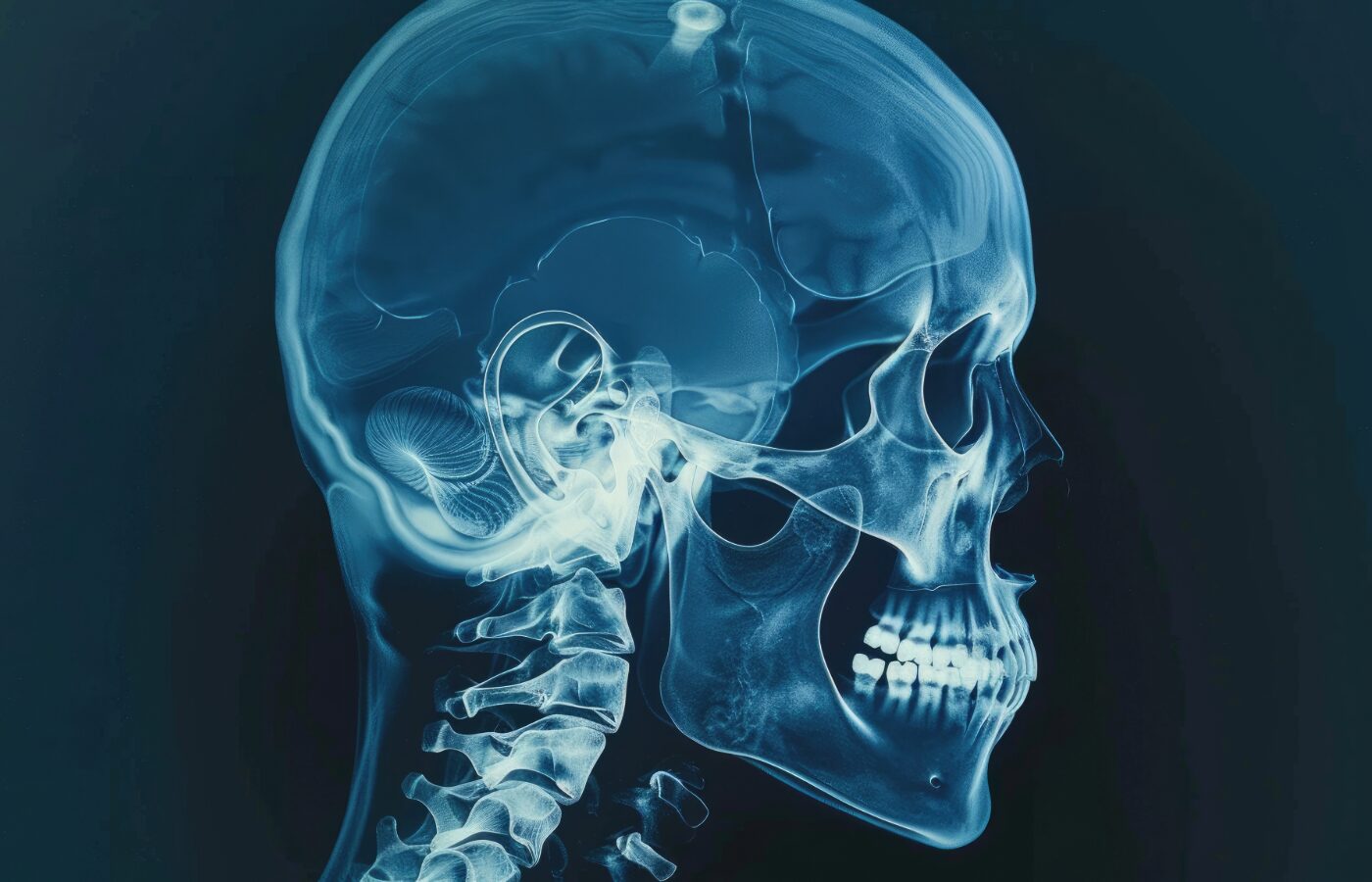
As an airway-focused dental practice, we see firsthand how deeply interconnected the structures of the jaw, skull, and neck are when it comes to oral health and overall well-being. Integrative dentistry is no longer just about treating teeth in isolation; it’s about understanding how the entire craniofacial system functions and how these structures affect critical processes like breathing. The jaw, skull, and neck play a pivotal role in maintaining a healthy airway, and dysfunctions in any of these areas can lead to chronic pain, poor sleep, and even serious systemic health issues.
The Interconnectedness of the Jaw, Skull, and Neck
In airway dentistry, we take a comprehensive approach to understand the mechanics of the jaw (or mandible), the skull, and the neck. These structures are not independent—they work together to facilitate essential functions like chewing, speaking, and most importantly, breathing. The temporomandibular joint (TMJ), which connects the jaw to the skull, is a critical component of this system, and when there’s dysfunction or misalignment, it can set off a chain reaction of problems that impact both the mouth and the airway.
How the Jaw and TMJ Affect the Skull and Neck
Muscular Interdependence
The muscles that control jaw movement are closely tied to the muscles in the neck and skull. When the jaw is misaligned or the TMJ isn’t functioning correctly, it can lead to muscle strain and tension in surrounding areas. This can cause chronic headaches, neck pain, and even shoulder discomfort. Many patients who come in with jaw pain or tension headaches are actually dealing with a misaligned bite or TMJ disorder that’s causing muscle overload in the head and neck region.
Nerve Pathways
The TMJ is located near some of the most important nerve pathways, particularly the trigeminal nerve, which affects sensation and movement throughout the face. TMJ dysfunction can irritate these nerves, leading to symptoms that extend beyond the jaw, such as ear pain, tinnitus, and even migraines. Patients often present with symptoms they don’t initially connect to their jaw health, but upon evaluation, we find that TMJ issues are at the root of the problem.
Impact on Posture and Spine
The alignment of the jaw can directly influence the posture of the head and neck. A misaligned jaw can cause patients to adjust the position of their head and neck, leading to cervical spine misalignment. Over time, this can create strain on the neck and shoulders, perpetuating a cycle of discomfort and dysfunction. For this reason, addressing jaw alignment is crucial not just for dental health, but for overall posture and musculoskeletal well-being.
Airway Health and the Role of the Jaw
One of the most significant aspects of airway dentistry is understanding how the jaw and its alignment affect a patient’s ability to breathe, particularly during sleep. A properly functioning airway is essential for delivering oxygen to the body, and any obstruction or narrowing of the airway can lead to serious health issues like snoring, Upper Airway Resistance Syndrome (UARS), or obstructive sleep apnea (OSA).
How Jaw Alignment Impacts the Airway
Narrowing of the Airway
A jaw that is misaligned, especially one that is recessed or underdeveloped, can compress the upper airway. This is especially problematic when a patient lies down to sleep, as the soft tissues in the throat can collapse, leading to airway blockages. A narrowed airway can result in snoring and fragmented sleep, affecting overall health and daytime functioning.
Obstructive Sleep Apnea (OSA)
In more severe cases, airway obstruction can lead to OSA, a condition where the airway becomes fully or partially blocked during sleep, causing repeated pauses in breathing. This deprives the body of oxygen and puts significant strain on the cardiovascular system, increasing the risk of heart disease, stroke, and high blood pressure. Jaw misalignment and TMJ issues are often contributing factors to this condition.
Breathing Patterns
The position of the jaw also affects whether a person breathes through their nose or mouth. Mouth breathing, especially during sleep, is associated with reduced oxygen intake, which can worsen sleep quality and contribute to conditions like sleep apnea. Addressing jaw alignment can help encourage nasal breathing, which is healthier for the airway and the body as a whole.
Treating Jaw Dysfunction and Airway Issues: An Integrative Approach
The key to effectively treating jaw pain, dysfunction, and airway issues lies in understanding the deep interconnections between the jaw, skull, and neck. In my practice, we take a holistic approach that looks at the entire craniofacial system, offering solutions that not only improve jaw function but also promote a healthier airway.
Some treatments paths are:
- Bite Alignment and TMJ Therapy Correcting the alignment of the teeth and jaw is a fundamental part of addressing TMJ dysfunction and its impact on the airway. Bite alignment therapies, such as orthodontics or splint therapy, help relieve pressure on the TMJ, reduce muscle strain, and improve airflow by repositioning the jaw.
- Airway Management and Sleep Apnea Treatment For patients with sleep-disordered breathing, treatments may involve oral appliances designed to reposition the jaw and open up the airway during sleep. Collaborating with sleep specialists to diagnose and manage conditions like OSA is also a key component of care.
- Muscle and Posture Therapy Since the jaw is intricately connected to the muscles of the neck and shoulders, addressing muscle tension and improving posture can relieve pain and prevent future dysfunction. Physical therapy, posture correction, and relaxation techniques often complement dental treatments in promoting long-term health.
- Nasal Breathing Promotion Encouraging proper breathing patterns through jaw alignment and airway management helps reduce the risks associated with mouth breathing, particularly during sleep. Proper jaw position opens up the nasal passages, allowing for more efficient breathing.
As a Breathe Institute Affiliate, we don’t just treat teeth, but ensure that the entire craniofacial system is functioning optimally. The jaw, skull, and neck are deeply interconnected, and problems in one area often manifest as pain, dysfunction, or airway issues in another. By addressing jaw alignment, TMJ health, and airway function together, we can provide comprehensive care that alleviates pain, improves breathing, and promotes better overall health.
For patients suffering from jaw pain, headaches, neck stiffness, or sleep-related breathing issues, seeking care from a dentist who understands these connections can be life-changing. Treating the root causes of dysfunction, rather than just the symptoms, leads to long-lasting relief and a healthier, more balanced life.
CONTACT US